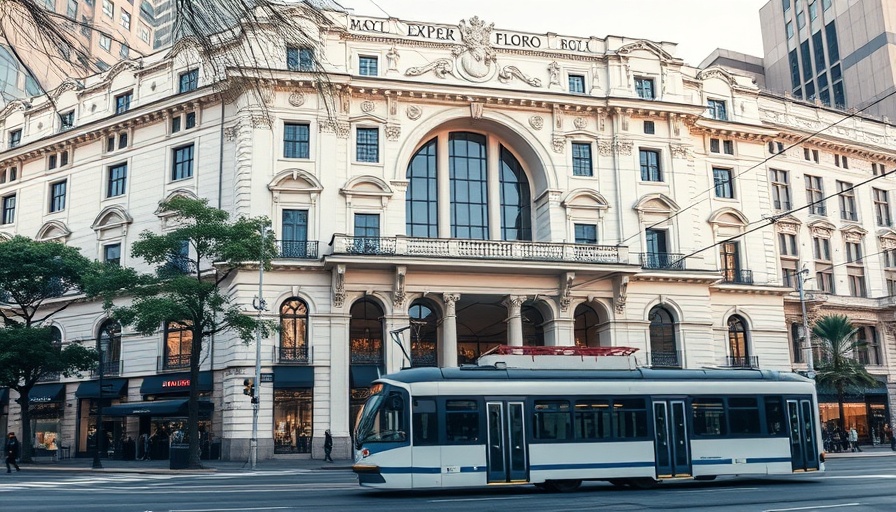
The Troubling Downward Trend of San Francisco's Retail Landscape
The San Francisco Centre, a once-thriving hub for shoppers, has seen its value plummet according to the latest appraisal, indicating significant shifts within the retail environment in the Bay Area. The appraisal suggests that the mall's market value might be even less than reported, a troubling sign for stakeholders invested in San Francisco's commercial property scene.
Vacancies and Their Impact on Property Value
Vacancy rates at the San Francisco Centre are escalating, raising concerns among investors and city officials alike. Data reveal that the mall is struggling to fill a growing number of empty storefronts as consumer shopping habits continue to evolve. With giant retail chains shuttering locations or withdrawing altogether, this trend significantly diminishes not just the mall's immediate earnings potential but also its overall market valuation.
Comparative Analysis: What's Happening Elsewhere?
This scenario isn't unique to the San Francisco Centre. Across the nation, major malls are grappling with similar issues. In areas like New York and Chicago, iconic shopping destinations are also witnessing a crisis as online shopping becomes increasingly dominant. The similarities in patterns suggest that the challenges faced by the San Francisco Centre may reflect a broader trend in regional and national retail.
Consumer Behavior: An Evolving Experience
As shopping behavior transforms, the importance of creating experiential retail has never been more pronounced. Recent studies show that shoppers, especially younger demographics, seek more than just products; they increasingly favor experiences and personalization during their visits. Malls that fail to adapt to this change may find themselves in perilous economic waters.
The Future of San Francisco's Retail Spaces
Experts predict that as property values continue to decline, there will be opportunities for innovative uses of space. Some suggest that transforming these vacant retail areas into mixed-use developments — combining retail with residences or office space — could re-invigorate local economies. This could also address the housing crisis that plagues cities like San Francisco, effectively tackling two issues at once.
The Human Cost of Economic Changes
Beneath the economic statistics lies a more profound human impact. Store closures do not just signify lost revenue; they represent job losses and a shift in local culture. Communities thrive around bustling retail spaces, and the decline of these malls could lead to urban desertification. Understanding this narrative is essential for parents, adults, and individuals who treasure their neighborhoods and community ties.
Potential Solutions for Revitalization
What can stakeholders do in light of these realities? Local governments, property owners, and community members must collaborate to develop sustainable models for reinvention. Creating incentives for small businesses, advocating for flexible leasing agreements, and encouraging community events can breathe new life into weary retail spaces.
The Role of City Leadership and Vision
A coordinated effort is vital for the revival of San Francisco's commercial sectors. City council members and economic development offices must prioritize revitalization plans that bridge art, culture, and retail. The city’s leadership can play a pivotal role in steering this transformation, fostering a future where spaces are not just places to shop, but vibrant hubs for living and social interaction.
The San Francisco Centre's future is uncertain, but by understanding trends and taking decisive action, there lies the potential for a revitalized retail scene that will benefit the community as a whole.
 Add Row
Add Row  Add
Add 




 Add Row
Add Row  Add
Add 

Write A Comment